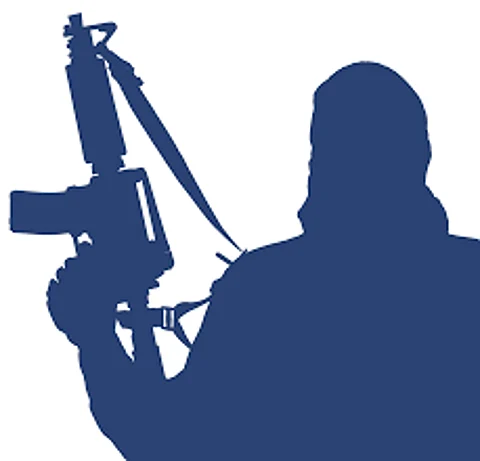

The News Minute | December 20, 2014 | 5.46 pm IST
In light of the ISIS making its presence felt in the country and the Union Government imposing a ban on the organization, we take a look at the other banned organizations in the country according to the Ministry of Home Affairs and the laws surrounding it.
The Ministry has proscribed 36 organizations under provisions of the Unlawful Activities (Prevention) Act 1967. The intention of the legislation was the identification of groups that seek to undermine the territorial integrity of the country.
The second major piece of legislation with respect to terrorism and the first to specifically address it as an issue was the Terrorist and Disruptive Activities (Prevention) Act, 1987 or TADA. More stringent than the UAPA, it sought to bring to justice those guilty of indulging in terrorism within the country. It lapsed in 1995.
In 2002, the Prevention of Terrorism Act or POTA was brought in by the NDA to tackle the growing issue of terrorism then.
It was repealed in 2004 by the UPA and the UAPA was given more teeth to tackle terrorism and amended by introducing the Unlawful Activities (Prevention) Amendment Act, 2004.
The organizations in the list of those banned under the UAPA can be more or less clubbed into the following categories:
Organizations for a separate ‘Khalistan’:
The demand for a separate ‘Khalistan’ for the Sikhs has been the driving force behind these organizations. The oldest of them, the Babbar Khalsa has been in operation since 1980. Dilawar Singh Babbar, who assassinated the Punjab CM, Beant Singh in 1995 claimed allegiance to the Khalsa. Another organization with similar goals is the International Sikh Youth Federation. Formed in 1984, the man responsible for making the bombs for the bombing of the Air India Flight 182 off Ireland was found to be an ISYF member. Other organizations are the Khalistan Zindabad Force and the Khalistan Commando Force.
Organizations for the liberation of Kashmir:
The demand for the separation of Kashmir from India forms the basis for these groups. The most notable among them is the LeT (Lashkar-e-Taiba), headed by Hafiz Muhammad Saeed, and responsible for the 2001 Parliamentary attacks and 26/11 attacks on Mumbai. Another notable mention is of the Jaish-e-Mohammad, which was formed in 2000 by Maulana Masood Azhar after India released him in exchange for the passengers of flight IC814, which was hijacked and taken to Kandahar in 1999. The organization also came out of the Harkat-Ul-Mujahideen, another such group. Other mentions are of the Hizb-Ul-Mujahideen, the Jammu Kashmir Liberation Front and the Dukhtaran-e-Millat, an all-woman organization established in 1987.
Organizations operating out of the North-East:
The north-east region, where the Armed Forces Special Powers Act or AFSPA has been in place in different durations across states, has had insurgent groups demanding sovereign states for various ethnic and tribal communities. Most well-known among them are the United Liberation front of Asom or ULFA. Looking for a separate state of Assam, they’ve been active since 1979 and the group has been known to target migrant workers and also resort to extortion. The National Democratic Front of Bodoland also operates out of Assam with the intention of carving out a separate state for the Bodo people out of Assam. There are five separatist organizations from Manipur alone, with the United National Liberation Front (UNLF) and the People’s Liberation Army of Manipur among them. Tripura also has two listed groups, the All Tripura Tiger Force and the National Liberation front of Tripura. The Kamtapur Liberation organization for a ‘Kamtapur’ state comprising parts of Bengal and Assam also finds mention along with the Garo National Liberation Army from Meghalaya.
Organizations forming the Maoist movement:
The groups forming the movement include the Communist Party of India (Marxist-Leninist), the left-wing group was formed in 1969 and first advocated an armed struggle following the peasant revolution in Naxalbari in 1967. Offshoots of this group include the Communist Party of India (Maoist) known for ambushing a convoy of Congress leaders in 2013, killing 27 people including Mahendra Karma. The group also killed 75 paramilitary personnel in 2010 and 25 members of the State Armed Police Force of West Bengal February of the same year. Another organization of the kind is the Maoist Communist Centre.
Organizations for a separate Tamil homeland:
The Tamil Nadu Liberation Army was a group started in the 1980’s after the Indian peacekeeping mission was sent to Sri-Lanka. A small group with strong left-wing tendencies, it is said to have disintegrated. Another group is the Tamil National Retrieval Troops, also formed in the ‘80’s.
Other organizations also include those not based out of the country like Al-Qaida, who has more than operative bases worldwide and the now defunct Liberation Tigers of Tamil Eelam (LTTE) from Sri Lanka.
Now, the Islamic State has also been banned in the country. The Deendar Anjuman from Hyderabad, also an Islamic group which are now known as the Majlis-e-Ittehad-ul Muslimeen (MIM), are also banned. As are the Indian Mujahideen who are believed to be a front for the LeT.
The list also mentions additions to it in case there are addition to the groups listed under the Schedule to the U.N. Prevention and Suppression of Terrorism Order, 2007.